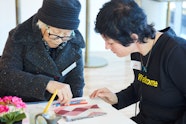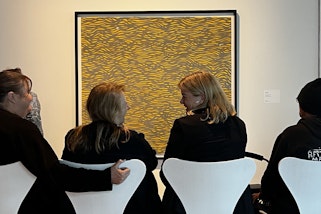Art and Dementia
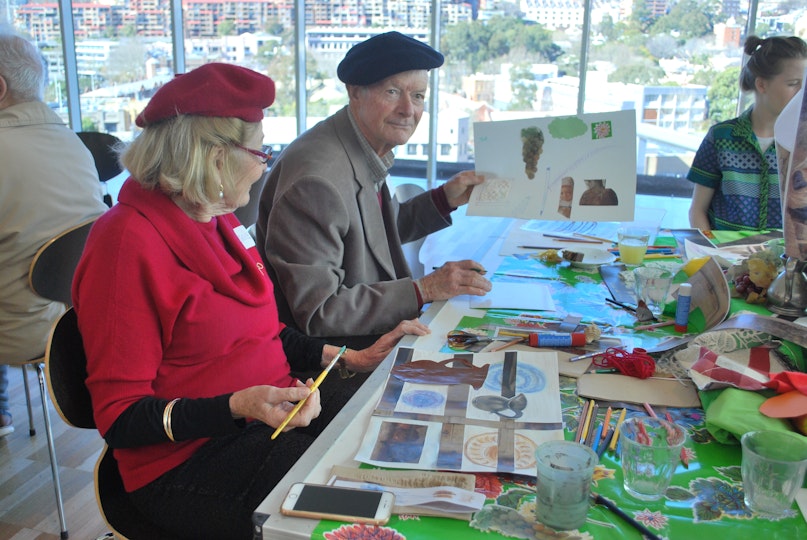
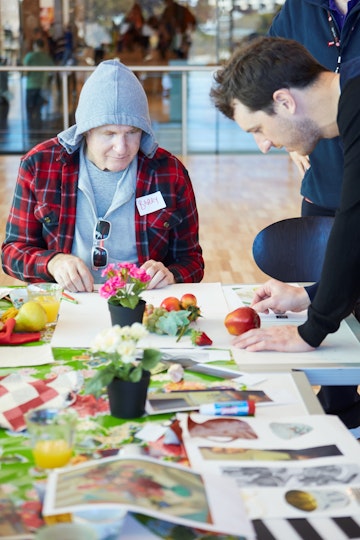
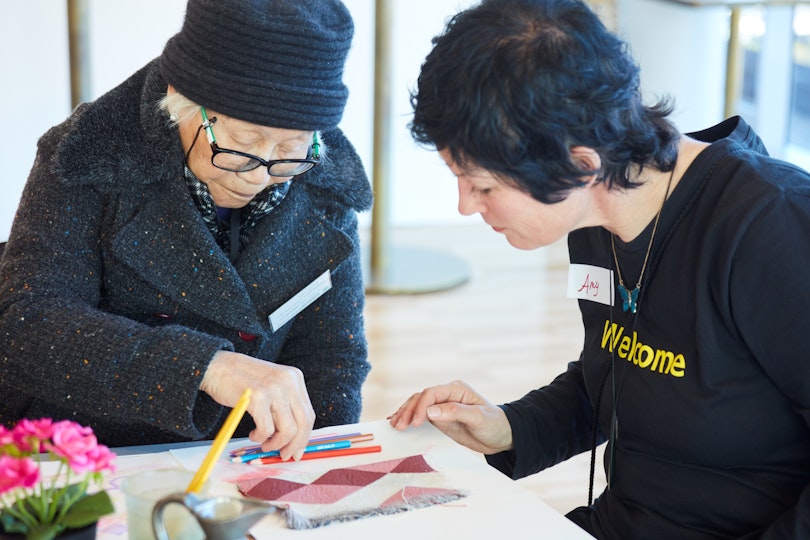
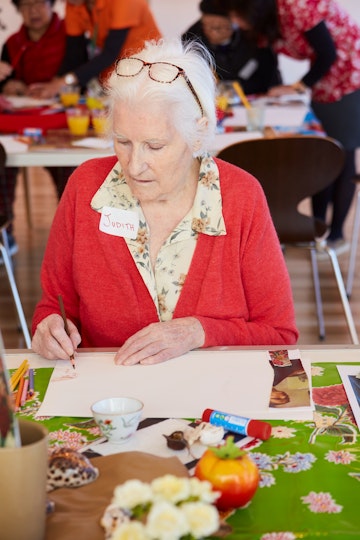
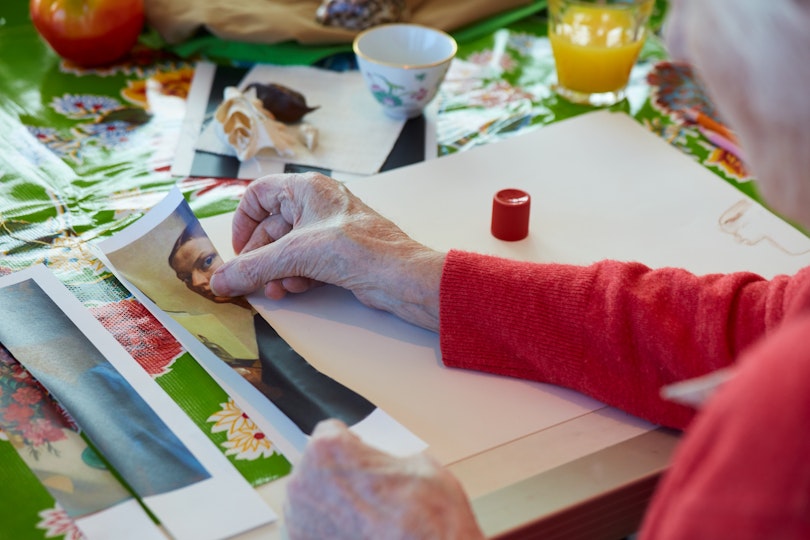
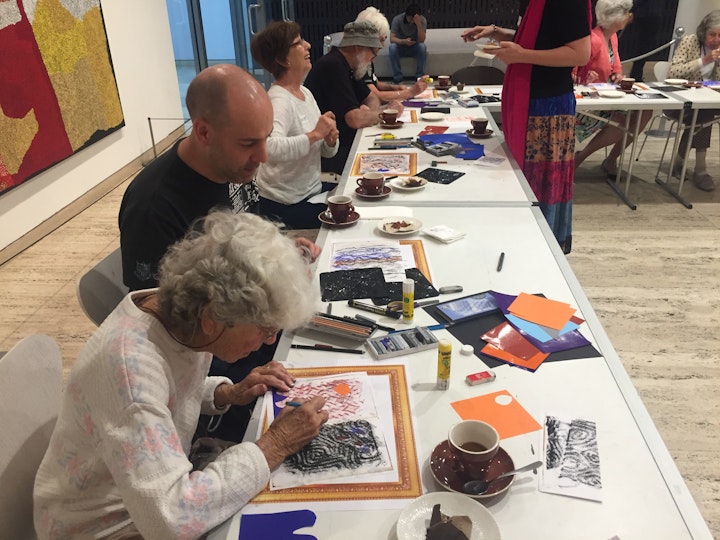
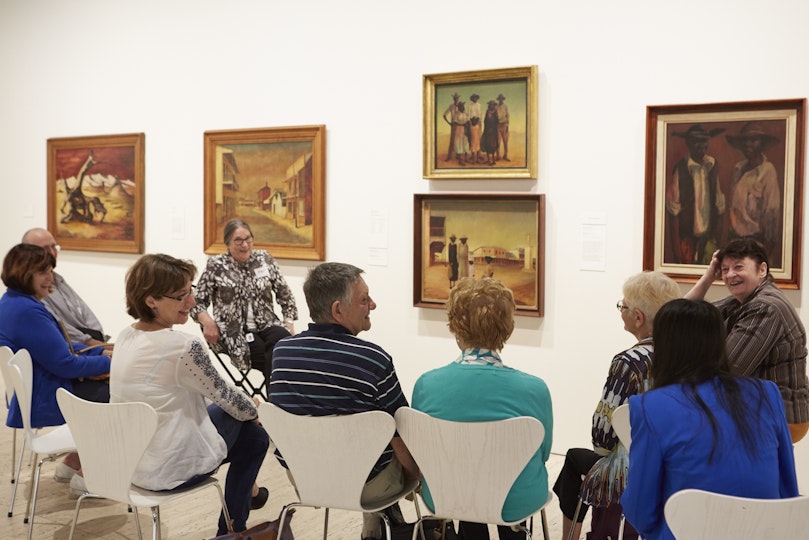
Engagement with works of art activate emotional, intellectual, and sensory responses in individuals which can have an impact on wellbeing.
Art and Dementia is a best-practice arts engagement model developed for people living with dementia, their care partners and communities, to support social inclusion and improved wellbeing.
By creating opportunities for individuals to imagine and think creatively about art in a safe environment, curiosity is stimulated with open-ended outcomes. Individuals reach their own interpretation of art through focused observation, group discussion and making personal connections.
Since 2009 the Art Gallery has offered discussion sessions, both monthly and on request, which have been developed to include sensory art-making experiences to ensure the collection and exhibitions are accessible for people living with dementia and their community support organisations.
-
Impact of arts engagement
Existing national and international research shows that arts engagement programs contribute significantly to the health and wellbeing of people living with dementia, carer partners and care staff.
Arts engagement programs support self-identity and confidence and provide opportunities for meaningful engagement – an important aspect of combatting social isolation and loneliness.
Impacts for individuals who engage with the Art and Dementia program on-site at the Art Gallery include:
stimulates the imagination through engaging with art
provides social inclusion
provides an opportunity for self-expression and reconnecting with a sense of identity
promotes wellbeing and quality of life
raises community awareness
In addition, arts engagement refocuses attention away from issues of the everyday, supports individuals in making associations (rather than focusing on reminiscence or memory), provides aesthetic experiences, allows for individual reflection and group engagement and discussion, and allows individuals to flourish.
-
Research
In 2016, the Arts and Dementia program was evaluated by Dr Gail Kenning, University of Technology. The research questions explored in this study were:
To what extent does the Art Gallery of New South Wales art access program for people with dementia provide pleasure and enjoyment that positively contribute to the wellbeing and quality of life of people with dementia?
What does ‘in the moment’ pleasure, joy, and mental and emotional stimulation generated in the Art Gallery of New South Wales art access program contribute to the quality of life of people living with dementia?
What learnings can be gained from the Art Gallery of New South Wales art access program for people with dementia in relation to care, wellbeing, and quality of life for people with differing needs including disabilities?
What learnings can be gained to inform future evaluation of art access programs for people with different physical and cognitive capabilities including dementia?
Read the report: Arts engagement for people with dementia
In 2017, the Art Gallery collaborated with Dr Gail Kenning on the Arts Engagement for Liveable Communities (AECL) project to test and grow innovative models of arts engagement for people living with dementia and their supporting networks, that could be applied in community contexts – with wellbeing, inclusivity and sustainability at its core. The project engaged with over 300 attendees and 12 organisations over 14 months.
Through the collaboration, we researched and trialled the model with people living with dementia and their carers at the Art Gallery and in a variety of community settings, including Hazelhurst Arts Centre and Gallery, Holdsworth Community Centre, Montefiore residential care, Uniting Care and the Salvation Army residential care, to identify the most effective art-viewing and art-making engagement practices. We saw an increase in requests, from care organisations, community centres and people living with dementia and their carers for arts engagement activities at the gallery and importantly, for activities that could be carried out in their own environment.
The team has developed, tested and produced resources and processes and is ready to work closely with residential care facilities, community centres, and local government to integrate its unique art engagement program in the community, while continuing ongoing rigorous evaluation.
Of the arts engagement programs available worldwide, the Art Gallery has championed a world-class arts engagement program since 2009, which has now evolved and consolidated into a model that can be replicated beyond the gallery walls.
